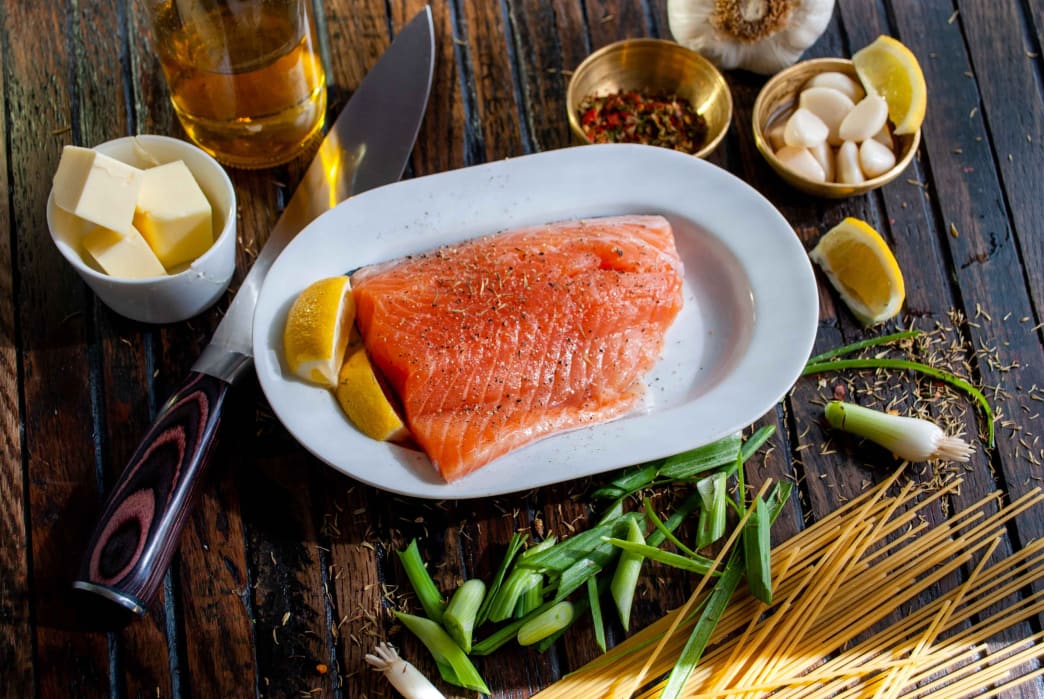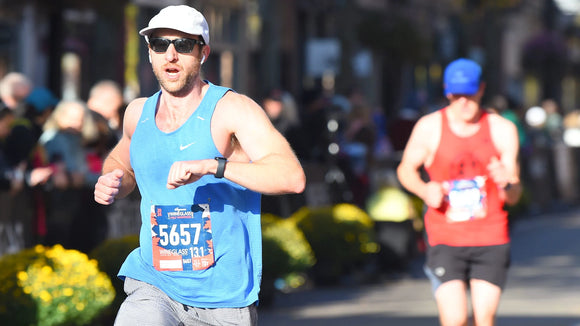Relief from sore muscles could be one meal away. Here, we reveal the best and worst foods for postworkout recovery.
Nailing your postworkout nutrition is of utmost importance, and eating the right things at the right time can promote quicker recovery, reduce muscle soreness, build lean muscle and replenish lost glycogen. There is definitely a pecking order when it comes to healing foods, and these below are among the best — and the worst — you can eat to fuel your recovery.
Healing Heroes
Tart Cherries
Research published in The Scandinavian Journal of Medicine & Science in Sports found that marathon runners who consumed 8 ounces of tart cherry juice twice daily for five days before, on the day of and 48 hours after a marathon experienced less muscle damage, soreness, inflammation and protein breakdown than those who did not. Why? Tart cherries contain anthocyanin, which contains the same active enzymes as are found in over-the-counter anti-inflammatory drugs, accelerating healing time.
Try it: Drink 8 to 12 ounces of tart cherry juice preworkout or postworkout.
Salmon
A study from the Clinical Journal of Sports Medicine revealed that omega-3s — found in abundance in salmon — markedly reduced perceived pain up to 48 hours post-exercise. This is due in large part to resolvins, metabolic byproducts of omega-3 breakdown that promote normal cellular function and reduce the inflammation that occurs as a result of working out, explains Charles Serhan, Ph.D., DSc, director of the Center for Experimental Therapeutics and Reperfusion Injury at Brigham and Women’s Hospital in Boston. Omega-3s also help keep the lining of your arteries smooth and clear, allowing the maximal amount of oxygen- and nutrient-rich blood to reach your recovering muscles.
Try it: Eat 4 ounces of salmon post-sweat sesh to get 26 grams of protein and 5.5 grams of quick-recovery fats.
Oatmeal
A study published in the European Journal of Applied Physiology showed that oats contain more than 20 polyphenols called avenanthramides. According to The Journal of Nutrition, these compounds, unique to oats, have potent antioxidant properties that help reduce inflammation in arterial cells, lower cholesterol and promote vasodilation, leading to better circulation and reduced blood pressure. Avenanthramides also work topically and are commonly found in soothing lotions to reduce itching, rashes and other skin irritations.
Try it: Eat ½ cup of oatmeal postworkout and choose the least-processed form you can find: A study in the Journal of Agricultural and Food Chemistry found that processing methods, such as steaming and rolling (for rolled oats), greatly reduced the avenanthramide content of the product.
Food Failures
Deli Meat
Sodium nitrite is used to cure and preserve deli meats, bacon and jerky, and according to the American Medical Association, a diet high in sodium nitrite may lead to methemoglobinemia, a condition in which your red blood cells cannot properly transport oxygen, thereby slowing healing and recovery time. Nitrites have also been linked to heart disease, Alzheimer’s, diabetes and fatty liver disease, and when heated, they can convert to nitrosamines, molecules that have been shown to cause cancer. In fact, multiple studies link processed meat intake with an increased risk of colorectal and pancreatic cancer.
Buy it: Opt for organic, low-sodium, nitrite-free meats, or better yet — cook your own. Also, filter your drinking water: According to the Centers for Disease Control and Prevention, nitrites from fertilizer can leach into the public water supply.
Alcohol
Though you might see drinking as a fun Friday night, your liver sees alcohol as a poison and halts all other metabolic processes to eliminate it — including fat metabolism: A study from The American Journal of Clinical Nutrition showed that consuming 24 grams of alcohol (about two drinks) slowed fat metabolism by 73 percent! Alcohol consumption was also associated with a decrease in both lean body mass and growth hormone production. And as for soreness, a study out of New Zealand found that athletes who ingested 1 gram of alcohol per kilogram of bodyweight after weightlifting experienced more soreness than those who consumed juice postworkout.
Buy it: Opt for a low-cal mocktail that contains no alcohol, or if you do imbibe, do so in moderation.
Raw Veggies
After a workout, your body needs fuel, and though veggies are loaded with vitamins and minerals, they lack the macronutrients and calories necessary for recovery, such as starchy carbohydrates, fats and protein. Raw veggies will also make you too full too fast, and you won’t be able to eat the nutrients and calories needed for optimal recovery after training.
Try it: Save your high-fiber, raw veggies for a midday snack, or pair them with a lean protein, a carb and a fat in a meal.
Written by SJ McSHane, CPT, CN, SLM for Oxygen Magazine and legally licensed through the Matcha publisher network. Please direct all licensing questions to legal@getmatcha.com.
Featured image provided by David B Townsend



